Unit 8: South, East, and Southeast Asia, 300 BCE–1980 CE
5.0(1)
5.0(1)
Card Sorting
1/115
Earn XP
Description and Tags
Art History
AP Art History
Unit 8: South, East, and Southeast Asia, 300 BCE–1980 CE
Buddhist-Philosophy-and-Art
Gandharan
Great-Stupa
Borobudur-Temple
Hindu-Philosophy-and-Art
HinduismBuddhism
Hindu-Sculpture
Nataraja
Nataraja
Angkor-Wat-Temple
Lakshmana-Temple
Jahangir-Preferring-a-Sufi-Shaikh-to-Kings
Korean-Art
Daoism
Confucianism
Forbidden-City
Terra-cotta-warriors
Chinese art
Longmen-Caves
Under-the-Wave-off-Kanagawa
Japanese Art
Ryoan-Ji
Todai-ji
University/Undergrad
Study Analytics
Name | Mastery | Learn | Test | Matching | Spaced |
|---|
No study sessions yet.
116 Terms
1
New cards
Ashlar masonry
carefully cut and grooved stones that support a building without the use of concrete or other kinds of masonry
2
New cards
Bas-relief
a very shallow relief sculpture
3
New cards
Bodhisattva
a deity who refrains from entering nirvana to help others
4
New cards
Buddha
a fully enlightened being. There are many Buddhas, the most famous of whom is Sakyamuni, also known as Gautama or Siddhartha
5
New cards
Cella
the main room of a temple, where the god is housed
6
New cards
Darshan
in Hinduism, the ability of a worshipper to see a deity and the deity to see the worshipper
7
New cards
Garbha griha
a “womb chamber,” the inner room in a Hindu temple that houses the god’s image
8
New cards
Horror vacui
(Latin, meaning “fear of empty spaces”) a type of artwork in which the entire surface is filled with objects, people, designs, and ornaments in a crowded and sometimes congested way
9
New cards
Hypostyle
a hall with a roof supported by a dense thicket of columns Iconoclasm— the destruction of religious images that are seen as heresy
10
New cards
Mandorla
(Italian, meaning “almond”) an almond-shaped circle of light around the figure of Christ or Buddha
11
New cards
Mithuna
in India, the mating of males and females in a ritualistic, symbolic, or physical sense
12
New cards
Mudra
a symbolic hand gesture in Hindu and Buddhist art
13
New cards
Nirvana
an afterlife in which reincarnation ends and the soul becomes one with the supreme spirit
14
New cards
Puja
a Hindu prayer ritual Sakyamuni
15
New cards
Shikara
a bee-hive shaped tower on a Hindu temple
16
New cards
Shiva
the Hindu god of creation and destruction
17
New cards
Stupa
a dome-shaped Buddhist shrine
18
New cards
Torana
a gateway near a stupa that has two upright posts and three horizontal lintels. They are usually elaborately carved
19
New cards
Urna
a circle of hair on the brows of a deity, sometimes represented as focal point
20
New cards
Ushnisha
a protrusion at the top of the head, or the top knot of a Buddha
21
New cards
Vairocana
the universal Buddha, a source of enlightenment; also known as the Supreme Buddha who represents “emptiness,” that is, freedom from earthly matters to help achieve salvation
22
New cards
Vishnu
the Hindu god worshipped as the protector and preserver of the world
23
New cards
Wat
a Buddhist monastery or temple in Cambodia
24
New cards
Yakshi
female and male figures of fertility in Buddhist and Hindu art
25
New cards
The Lion
a symbol of Buddha’s royalty
26
New cards
The Wheel
Buddha’s law
27
New cards
Lotus
a symbol of Buddha’s pure nature. The lotus grows in swamps, but mud slides off its surface.
28
New cards
Columns surrounded by a wheel
Buddha’s teaching
29
New cards
Empty Throne
Buddha, or a reminder of a Buddha’s presence.
30
New cards
Bodhisattvas
helpers of the Buddha, are usually depicted near the Buddha.
31
New cards
mudras
Buddhas' moods vary but most suggest meditation. Hand gestures called \____, reveal Buddhas' actions and feelings.
32
New cards
ushnisha
The head has an \______ or top knot, hair has tight curls, and extremely long ears.
33
New cards
Yakshas and yakshis
These are distinctive figures that appear frequently in Indian popular religion and are often incorporated into the Buddhist pantheon.
34
New cards
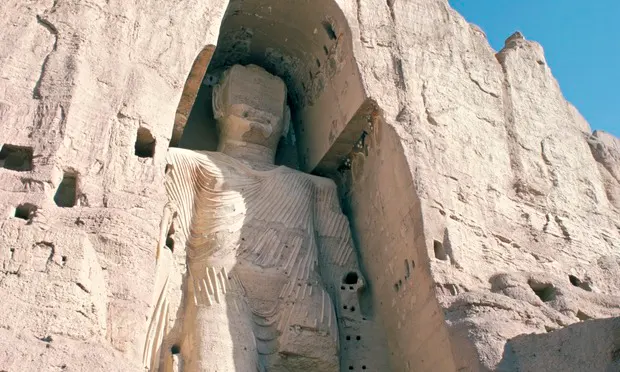
Gandharan
By Buddha from Bamiyan (400–800)First colossal Buddhas.Pilgrimage site linked to the Silk Road.
These Buddhas served as models for later large-scale rock-cut images in China.
These Buddhas served as models for later large-scale rock-cut images in China.
35
New cards
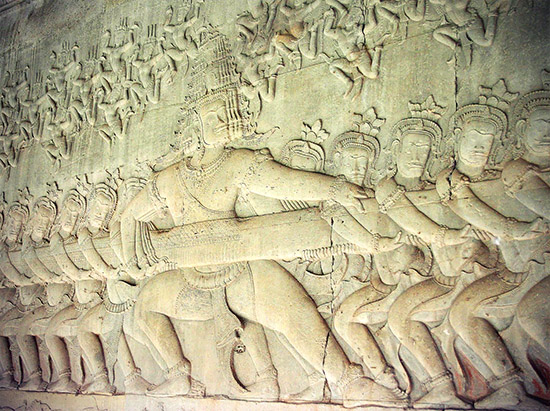
churning of the ocean of milk
one of the central events in the ever-continuing struggle between the devas (gods) and the asuras (demons, or titans).
36
New cards
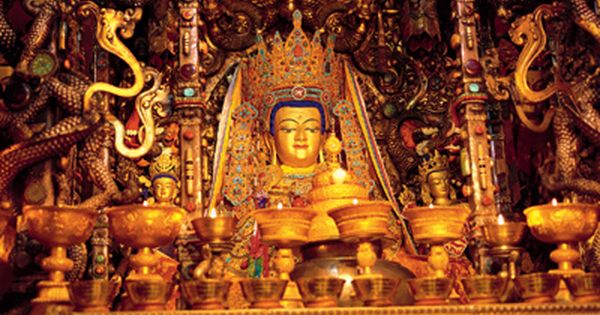
Jowo Rinpoche enshrined in the Jokhang Temple
Statue thought to have been blessed by the Buddha himself. Temple founded in 647 by the first ruler of a unified Tibet. Disappeared in 1960s during China’s Cultural Revolution.
37
New cards
Mt. Meru
The stupa represents \_____, the mountain at the center of the world in Buddhist cosmology that connects the earth and the heavens.
38
New cards
giant hemisphere
The stupa's distinctive shape, like a \____, and the direction of prayer with the sun, give it cosmic symbolism.
39
New cards

Great Stupa
Pilgrimage site. A Buddhist shrine, mound shaped and faced with dressed stone containing the relics of the Buddha. The worshipper circumambulates the stupa clockwise along the base of the drum
40
New cards

Great Stupa Torana
orientation and direction of ritualistic circumambulation correspond with the direction of the sun’s courserichly carved scenes on the architraves
41
New cards
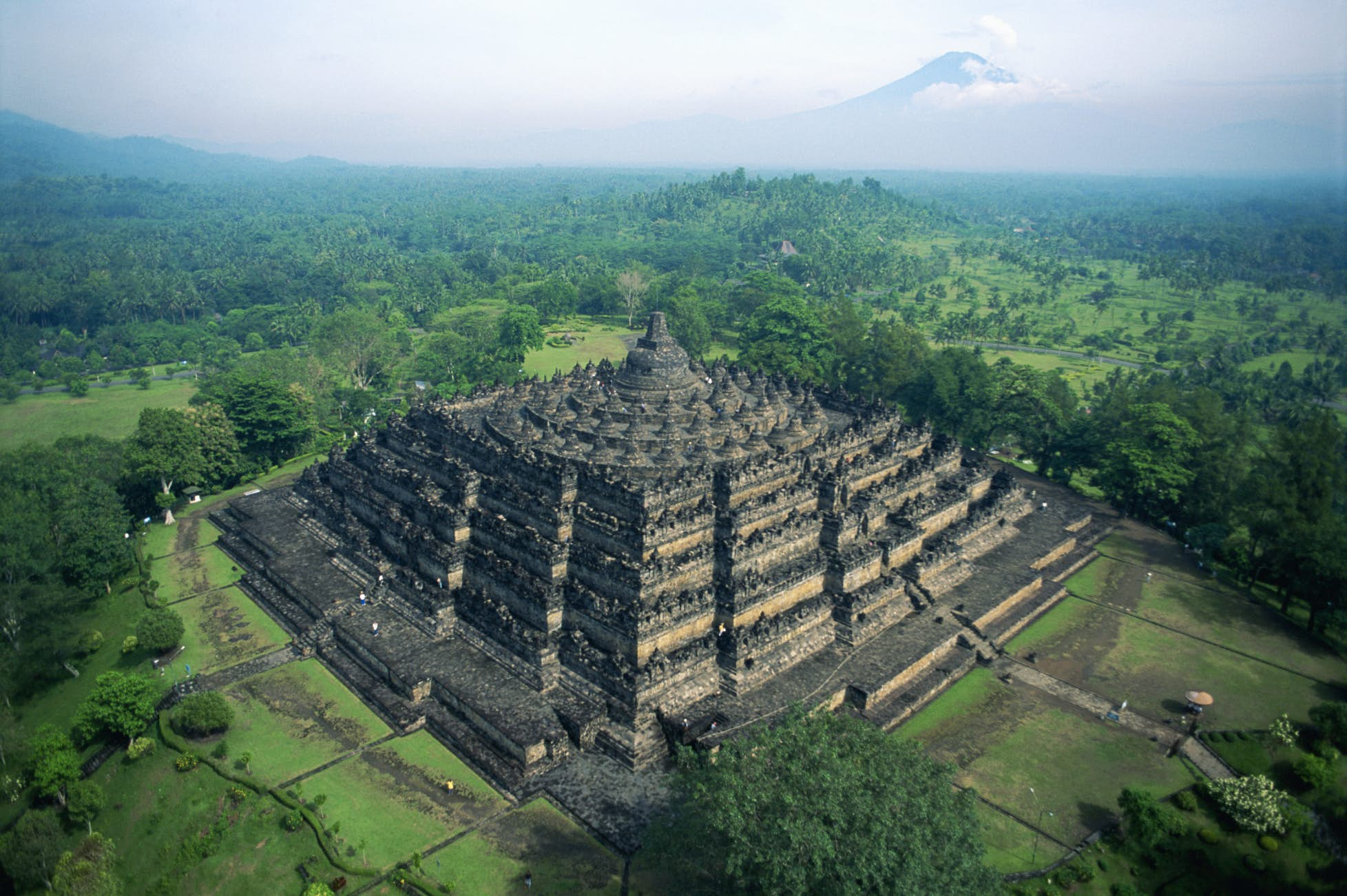
Borobudur Temple
Pyramid in form; aligned with the four cardinal points of the compass. This massive Buddhist monument contains 504 life-size Buddhas, 1,460 narrative relief sculptures on 1,300 panels 8,200 feet long. Meant to be circumambulated on each terrace
42
New cards
Borobudur Temple Body
five terraces in which people abandon their earthly desires; this is the world of forms—people have to control these negative impulses; sculptures here show the pilgrimage of the young man, Sudhana, who sets out in search of the Ultimate Truth.
43
New cards
Borobudur Temple Superstructure
an area that represents a formless world, in which a person experiences reality in its purest stage, where the physical world and worldly desire are expunged.
44
New cards
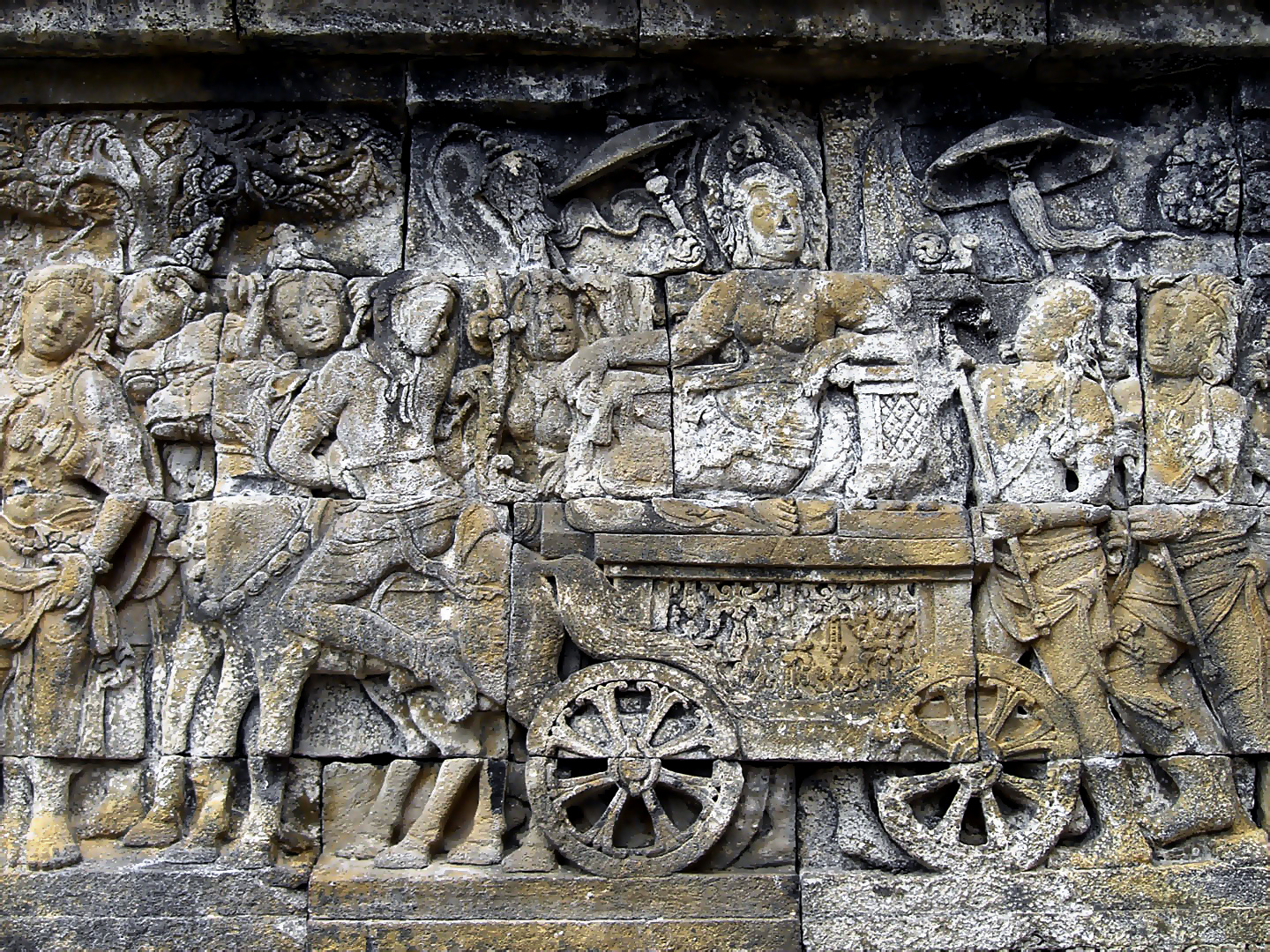
Queen Maya riding a horse carriage retreating to Lumbini to give birth to Prince Siddhartha Gautama
Densely packed scene; horror vacui.The queen is majestic and at rest before giving birth. Ready to give birth to her son, Prince Siddhartha Gautama, the Buddha. She is brought to the city in a great ceremonial procession.
45
New cards
Brahmins
Orthodox Hindus accept the Vedic texts as divine in origin and maintain aspects of the Vedic social hierarchy, which assigns a caste of ritual specialists known as \_____ to officiate between the gods and humankind.
46
New cards
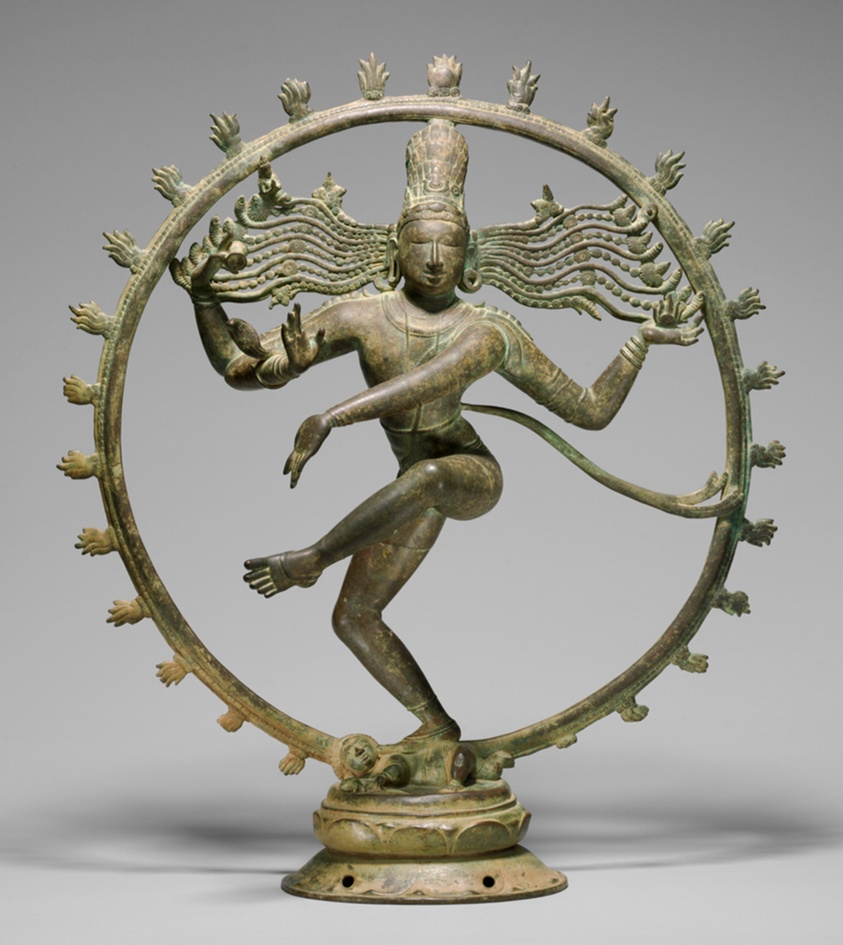
Shiva as Lord of Dance (Nataraja)
Shiva has four hands. The sculpture becomes the receptacle for the divine spirit when people pray before it. The distribution of this figure due to the patronage of a queen, Mahadevi.
47
New cards
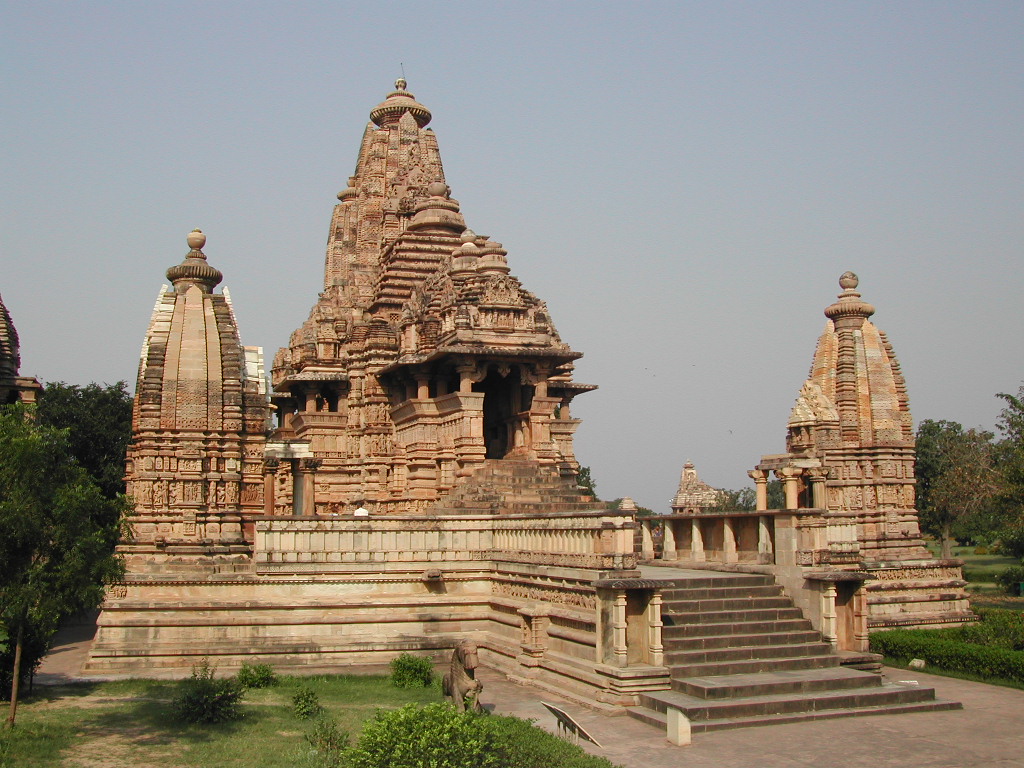
Lakshmana Temple
The temple is placed on a high pedestal, or plinth, to be seen from a distance. It appears like rising peaks of a mountain range. It is a Hindu temple grouped with a series of other temples in Khajuraho. The temple is dedicated to Vishnu.
48
New cards
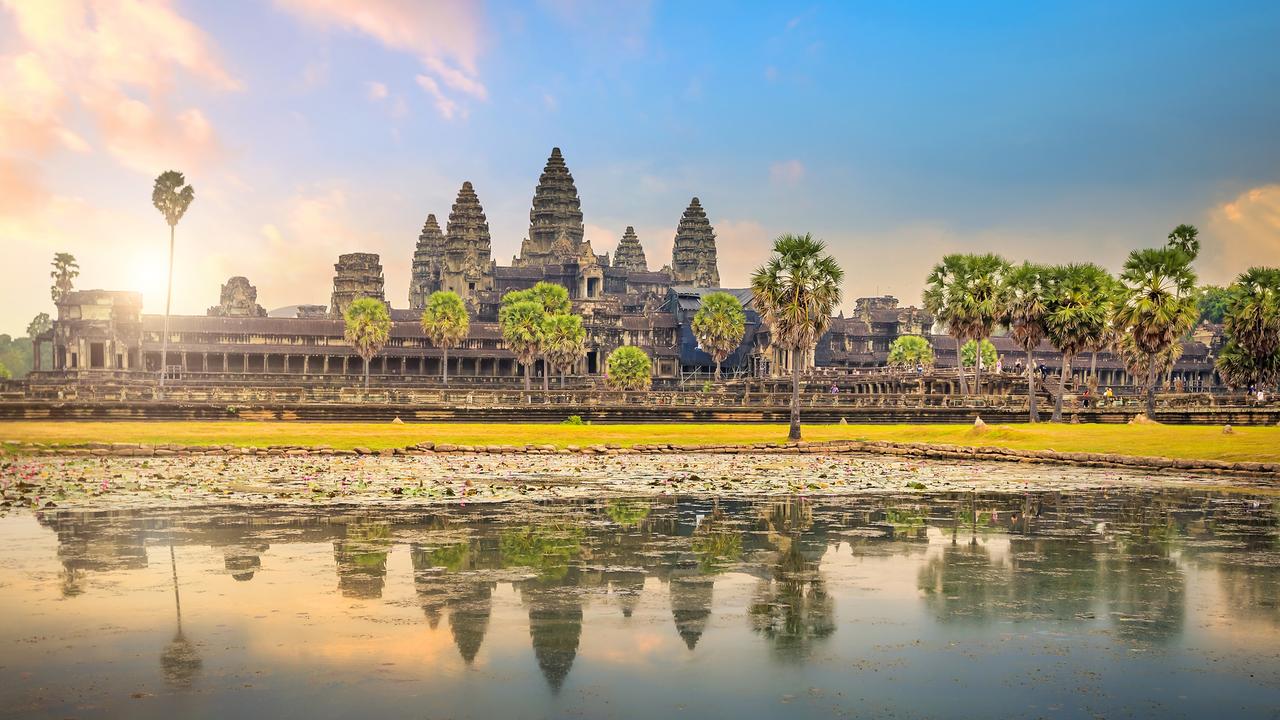
Angkor Wat Temple
Dedicated to Vishnu; most sculptures represent Vishnu’s incarnations. May have been intended to serve as the king’s mausoleum. Built by King Suryavarman II.Mountain-like towers symbolize the five peaks of Mount Meru
49
New cards
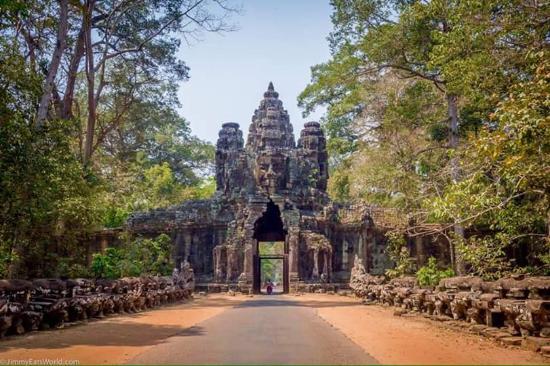
South Gate of Angkor Wat Temple
One of the 5 gates which guard the ancient city of Angkor Thom, and is the best preserved of all the gates. It was built by King Jayavarman VII in the late 12th Century, serving as 1 of the 5 holy Buddhist gateways to Angkor Thom.
50
New cards
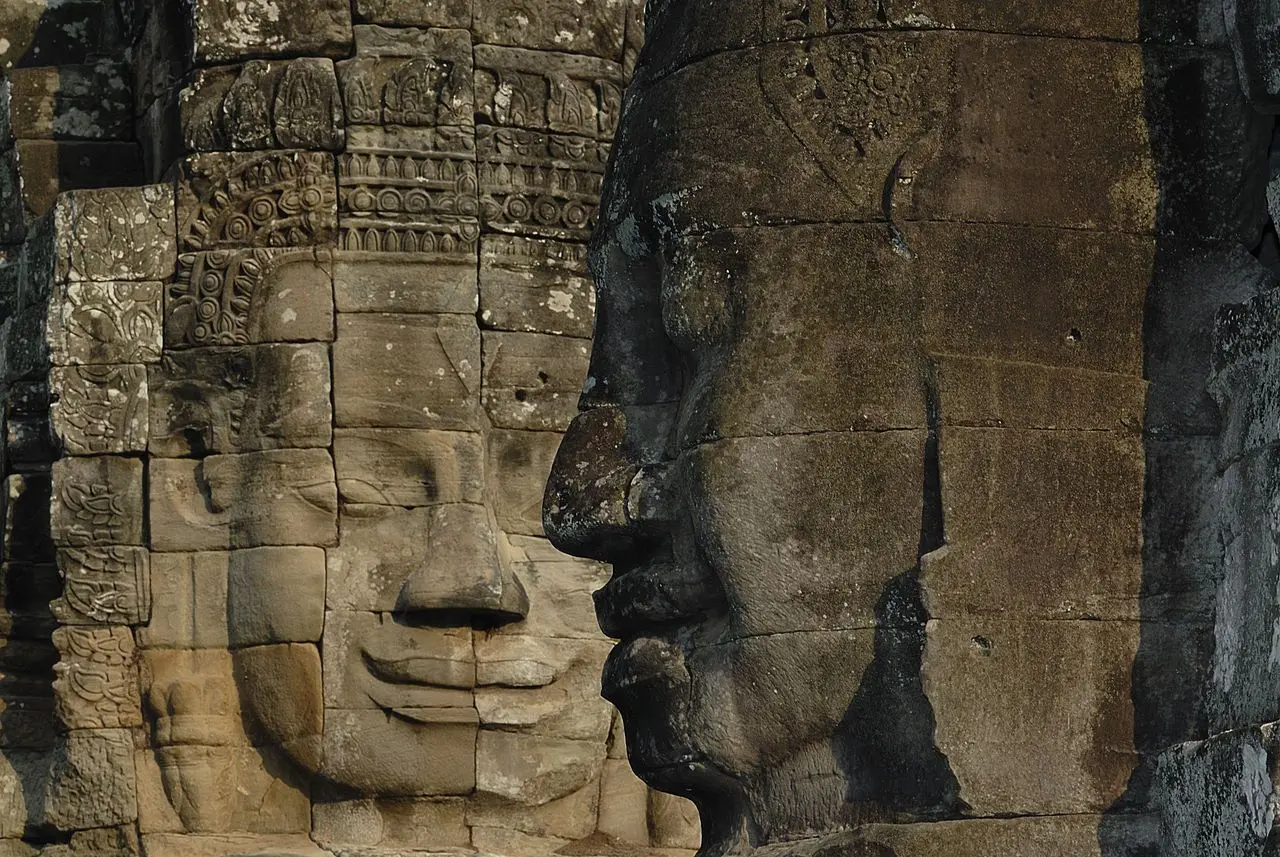
Jayavarman VII as Buddha
He was considered to be a living Buddha, or bodhisattva who turned his back from the brink of enlightenment to redeem or save his people from suffering; he imagined himself in a role similar to that of the present day Dalai Lama of Tibet.
51
New cards
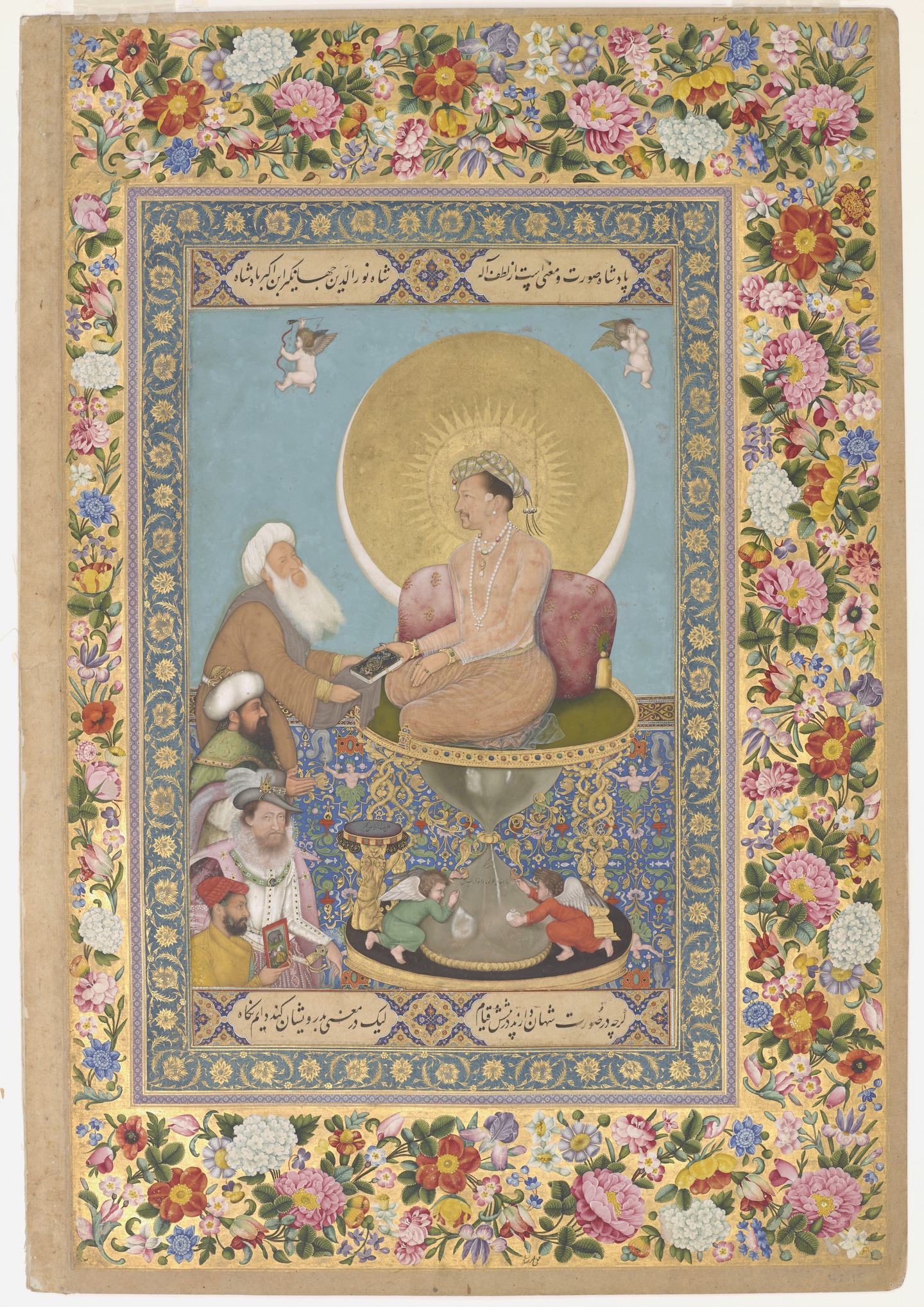
Jahangir Preferring a Sufi Shaikh to Kings
By Bichitr (c. 1620) | Great interest in the Mughal court for European allegorical portraits, techniques, and motifs. Quotation, in frame: “Though outwardly shahs stand before him, he fixes his gazes on dervishes.”
52
New cards
Emperor Shi Huangdi
the first ruler to unify China politically, standardize written Chinese, weights and measures, and establish a uniform currency.
53
New cards
Calligraphy
a traditional Chinese aesthetic expression that stands between poetry and painting, and it was an important part of passing state exams and attaining important posts.
54
New cards
Bi
a round ceremonial disk found in ancient Chinese tombs; characterized by having a circular hole in the center, which may have symbolized heaven
55
New cards
Bodhisattva
a deity who refrains from entering nirvana to help others
56
New cards
Coiling
a method of creating pottery in which a rope-like strand of clay is wrapped and layered into a shape before being fired in a kiln
57
New cards
Colophon
a commentary on the end panel of a Chinese handscroll; an inscription at the end of a manuscript containing relevant information on its publication
58
New cards
Confucianism
a philosophical belief begun by Confucius that stresses education, devotion to family, mutual respect, and traditional culture
59
New cards
Daoism
a philosophical belief begun by Laozi that stresses individual expression and a striving to find balance in one’s life
60
New cards
Hanja
Chinese characters used in Korean script with a Korean pronunciation
61
New cards
Literati
a sophisticated and scholarly group of Chinese artists who painted for themselves rather than for fame and mass acceptance. Their work is highly individualized
62
New cards
Pagoda
a tower built of many stories. Each succeeding story is identical in style to the one beneath it, only smaller. They typically have dramatically projecting eaves that curl up at the ends
63
New cards
Porcelain
a ceramic made from clay that when fired in a kiln produces a product that is hard, white, brittle, and shiny
64
New cards
Potter’s wheel
a device that usually has a pedal used to make a flat circular table spin, so that a potter can create pottery
65
New cards
Throwing
molding clay forms on a potter’s wheel
66
New cards
Vairocana
the universal Buddha, a source of enlightenment; also known as the Supreme Buddha who represents “emptiness,” that is, freedom from earthly matters to help achieve salvation
67
New cards
Yin and yang
complementary polarities.
68
New cards
yin
a feminine symbol that has dark, soft, moist, and weak characteristics.
69
New cards
yang
the male symbol that has bright, hard, dry, and strong characteristics
70
New cards
Dao
a religious journey that emphasizes self-expression, achieving serenity, and oneness with nature
71
New cards
Laozi
the founder of Daoism, believed in escaping societal pressures
72
New cards
Confucianism
religion based on behavior, relationships, and duty
73
New cards
Analects
a series of precepts that presents an ideal man with attributes like loyalty, morality, generosity, and humanity
74
New cards
pagoda
The stupa, a Buddhist building from India, became the \____ in China.
75
New cards
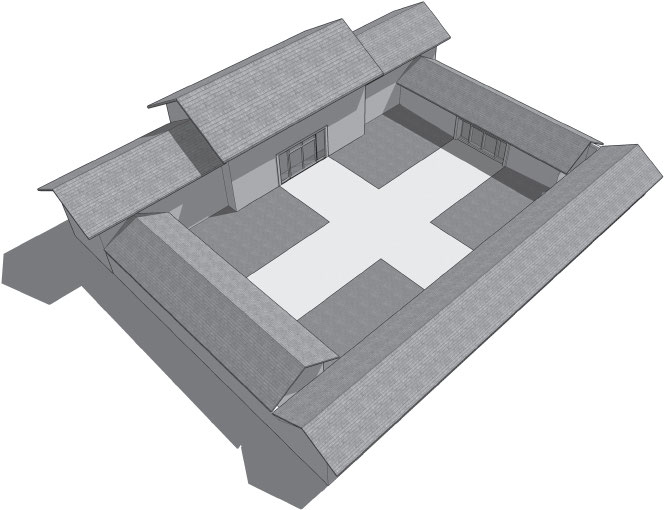
Courtyard-style
\______ residences have exterior walls to keep the outside world away and frame an atrium.
76
New cards
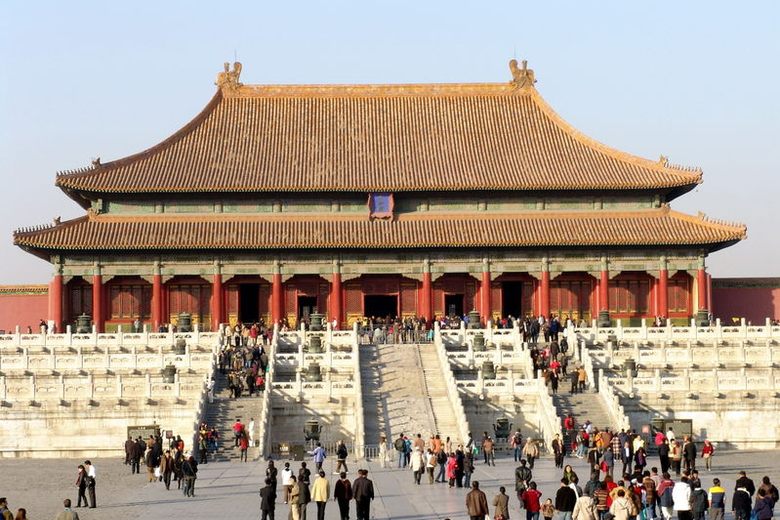
Forbidden City
Largest and most complete Chinese architectural ensemble in existence. The emperor’s palace.
77
New cards
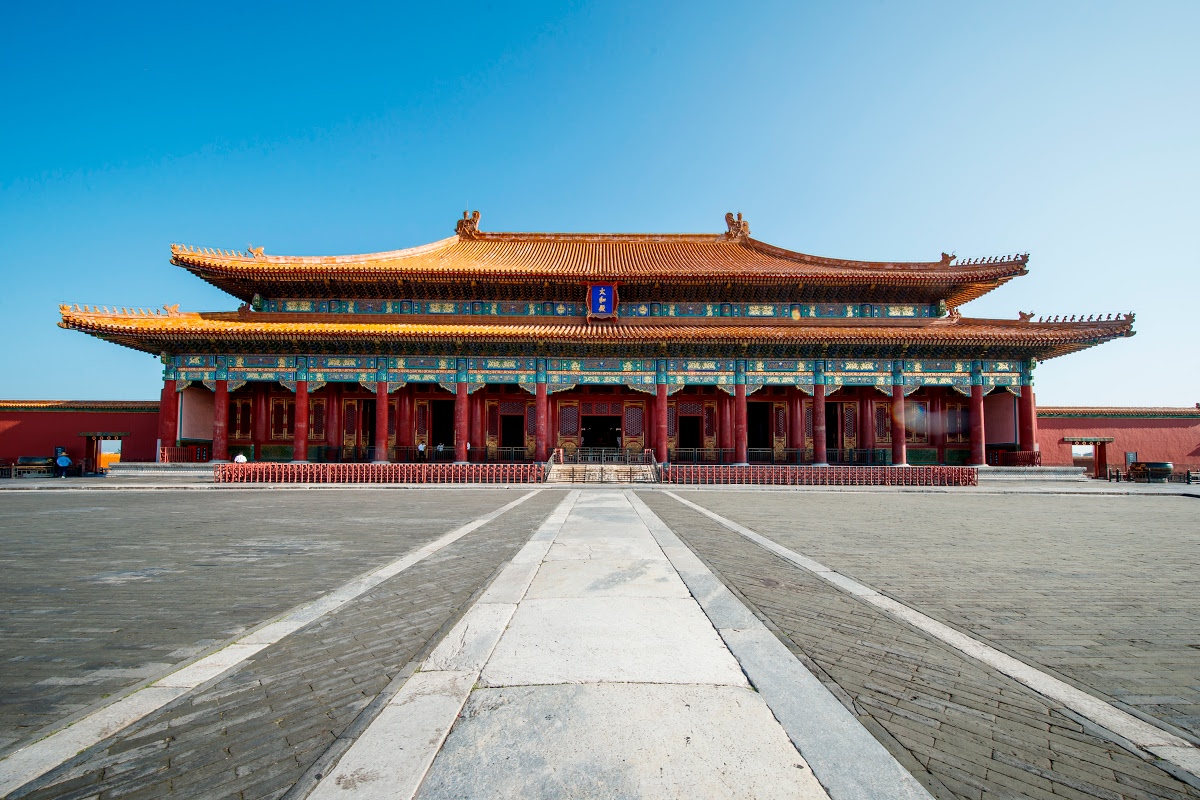
Hall of Supreme Harmony, Forbidden City
Ceremonies took place here for the new year, the winter solstice, and the emperor’s birthday. The largest building in the complex. It is a wooden structure made with elaborately painted beams; meant for grand ceremonies.
78
New cards
Handscrolls
These are read right to left and can be stored in specially designed cabinets.
79
New cards
Silk
This is the preferred surface for painting, with artists choosing specific silks for color and texture.
80
New cards
Landscape paintings
These are highly valued and reflect a philosophical idea through the use of crowded and empty spaces.
81
New cards
Chinese porcelain
It is a form of art that appears utilitarian but stands alone as an object of beauty.
82
New cards
Glazing techniques
These are used to achieve a glossy finish and protect the vase from wear.
83
New cards
Literati
the artists who rejected the restrictive nature of court art and developed a highly individualized style.
84
New cards
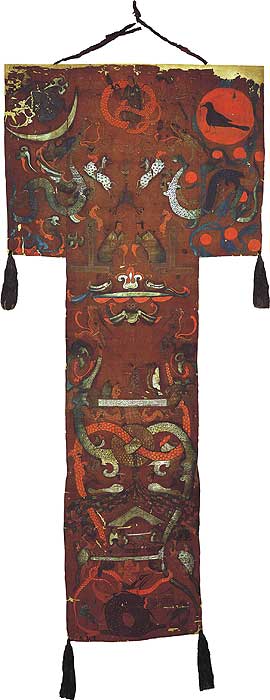
Funeral banner of Lady Dai (Xin Zhui)
Covered the inner coffin which contained the intact body of Lady Dai in a tomb. Carried in a procession to the tomb, and then placed over the body to speed its journey to the afterlife.
85
New cards
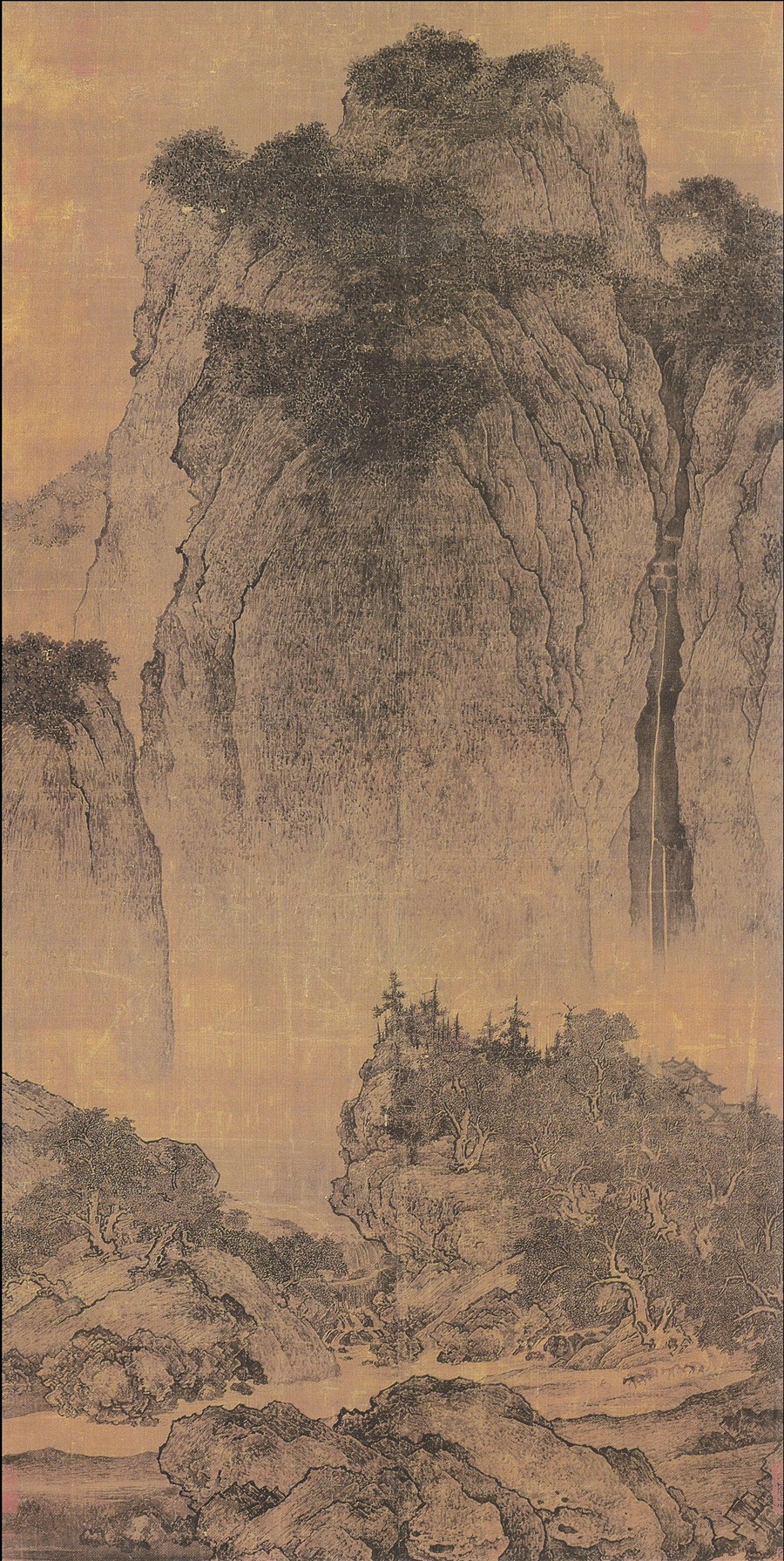
Travelers among Mountains and Streams
By Fan Kuan (c. 1000); Hanging scroll; meant to be studied and appreciated, not hung permanently. The work contains elements of Daoism, Buddhism, and Confucianism. Very complex landscape.
86
New cards
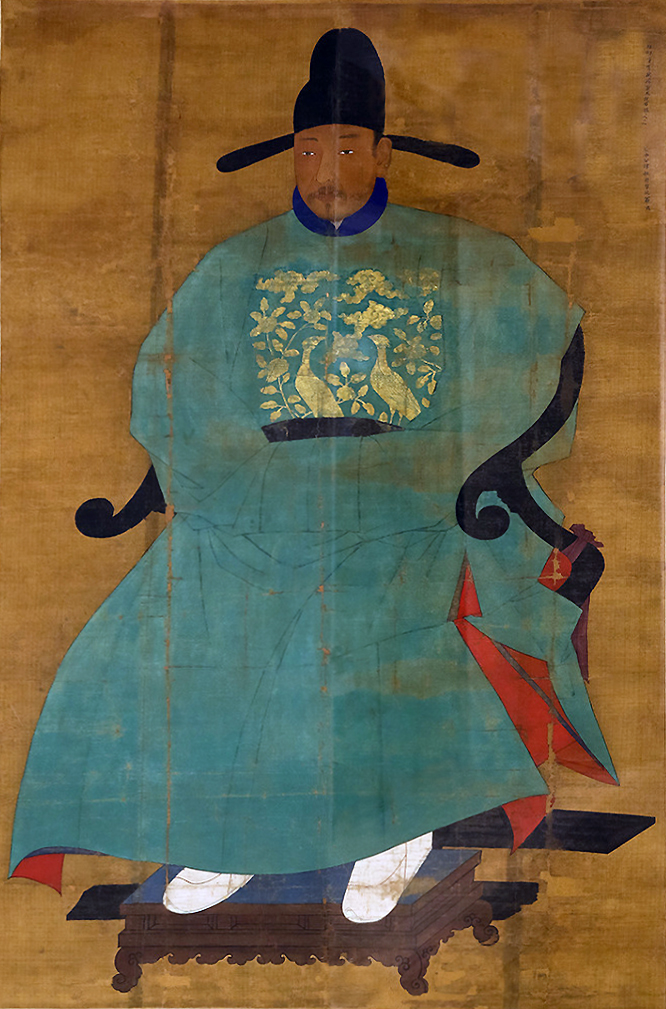
Portrait of Sin Sukju
Hanging scroll. Painting on silk was a highly desired and a greatly esteemed product. A reminder to his descendants of Sin Sukju’s status in Korean society.
87
New cards

Chairman Mao en Route to Anyuan
An oil painting by Liu Chunhua (1969); Mao rises above a landscape that contains a power line as a symbol of industrialization. Painted during the Cultural Revolution of 1966–1976
88
New cards

Terra cotta warriors
From the mausoleum of the first Qin emperor of China (c. 221–209 B.C.E.). The work represents a Chinese army marching into the next world. This is an early form of mass production, alluding to the power of the state.
89
New cards
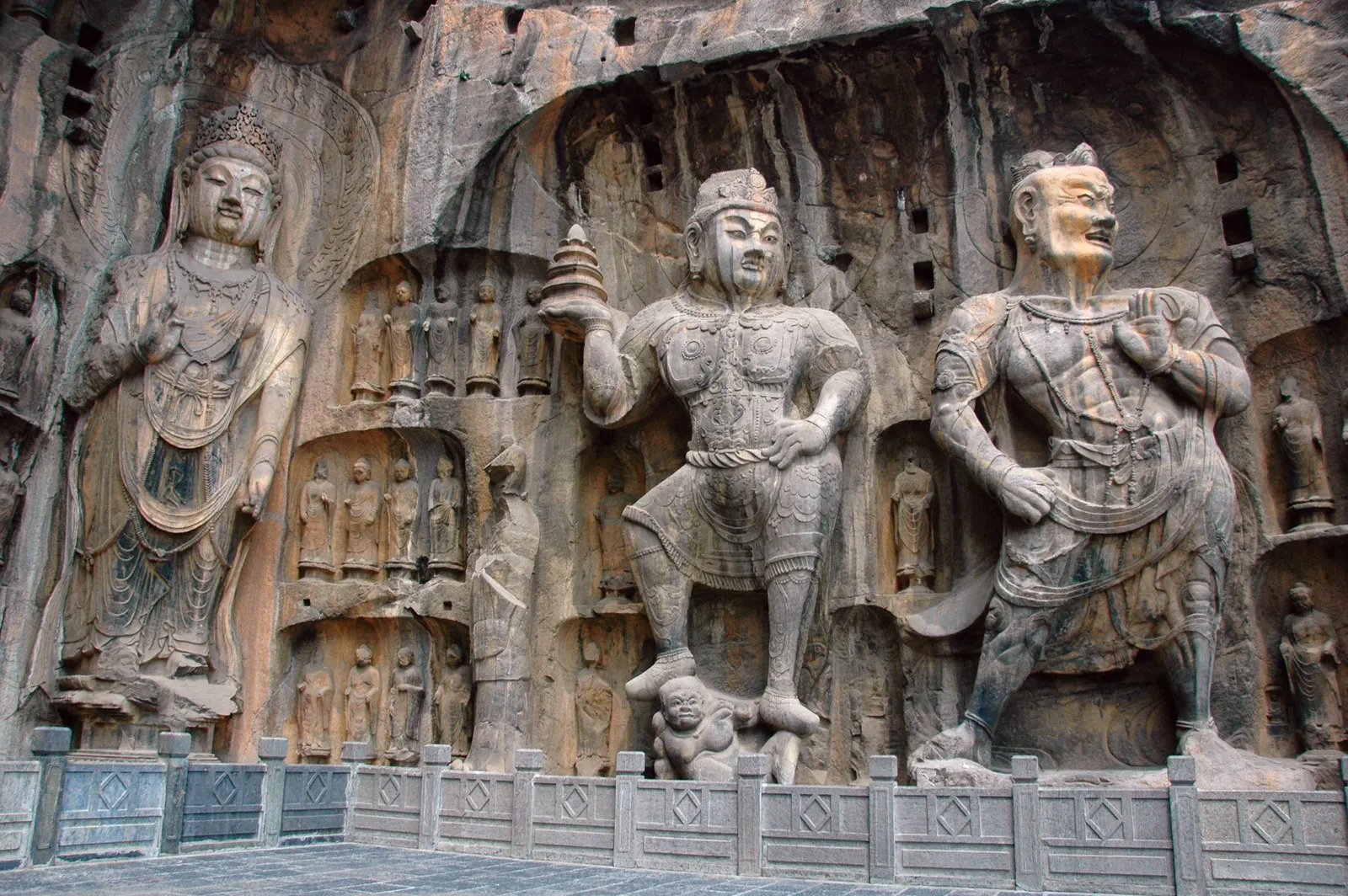
Longmen Caves
The Buddha is arranged as if on an altar of a temple, deeply set into the rock face. Sculptures and reliefs are carved from the existing rock—some colossal, some small. More than 2,300 caves and niches are carved along the banks of the Yi River.
90
New cards

Gold and jade crown
Stylized geometric shapes symbolize trees.Antler forms influenced by shamanistic practices in Siberia. Uncovered from a royal tomb in Gyeongju, Korea; from the Silla Dynasty.
91
New cards
Coiling
It was the original method of making ceramics in China, where clay was rolled into a cord-like shape and sculpted into a form.
92
New cards
Yuan Dynasty
This dynasty produced vases with a distinct blue and white color, which was achieved by using imported cobalt from Iran.
93
New cards

The David Vases
The blue color was imported from Iran; Chinese expansion into western Asia made the cobalt blue available. Made for the altar of a Daoist temple along with an incense burner. Made of Jingdezhen porcelain. Named after Sir Percival
94
New cards
kamikaze
The Mongols attempted to invade in 1281 but their fleet was destroyed by a typhoon called .
95
New cards
Continuous narrative
a work of art that contains several scenes of the same story painted or sculpted in continuous succession
96
New cards
Genre painting
painting in which scenes of everyday life are depicted
97
New cards
Haboku (splashed ink)
a monochrome Japanese ink painting done in a free style in which ink seems to be splashed on a surface Kondo
98
New cards
Mandorla
(Italian, meaning “almond”) a term that describes a large almond-shaped orb around holy figures like Christ and Buddha
99
New cards
Tarashikomi
a Japanese painting technique in which paint is applied to a surface that has not already dried from a previous application
100
New cards
Ukiyo-e
translated as “pictures of the floating world,” a Japanese genre painting popular from the seventeenth to the nineteenth century